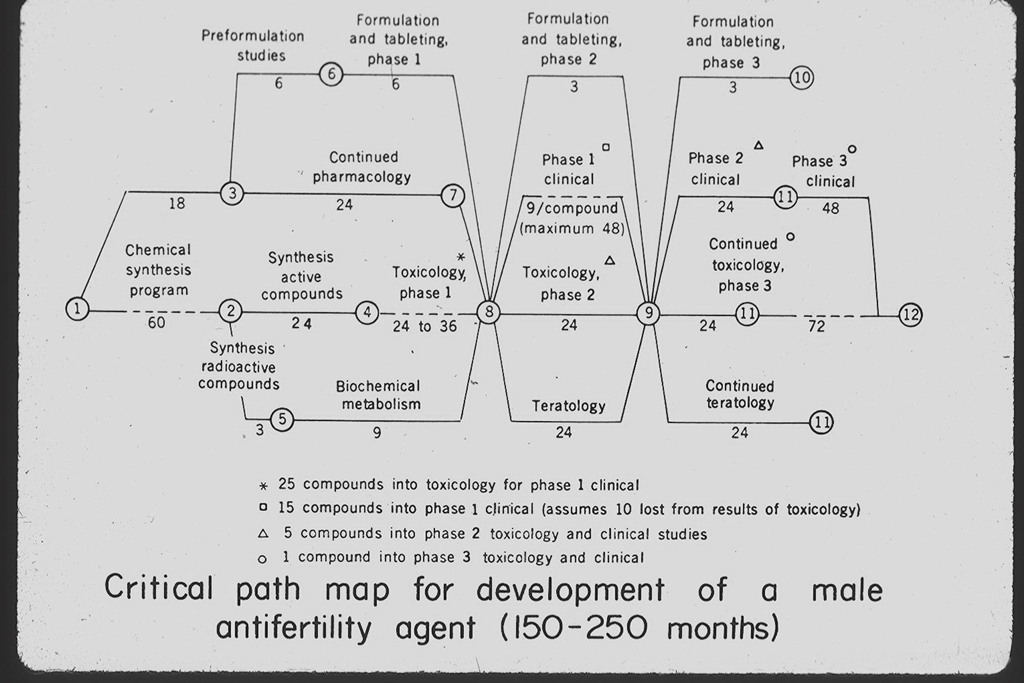A
Pill for Men: Dreams, Realities, and Prognosis
Professor Carl Djerassi ForMemRS
Professor of Chemistry,
Emeritus,
�
During the past four decades, scientific and journalistic reports have periodically predicted a contraceptive Pill for Men within the next five years. Yet no such Pill is on the horizon. The reasons are not due to scientific but rather to operational, economic, and even legal hurdles that are consistently ignored.
Some four decades ago, in an
article entitled Prognosis for the
Development of New Chemical Birth-Control Agents,1
I reached the conclusion that parochial
attitudes in technologically advanced nations make prospects increasingly
dismal. In a follow-up article,2 Birth Control after 1984, dealing with
realistic operational aspects, I stated: All
the advances in fertility control [considered
by the WHO] are based in one way or
another on chemical approaches�. This type of research� is exceedingly
complicated, in both its preclinical and clinical phases; the required manpower
and financial resources are available only in the technologically most advanced
countries�. The new birth control agents of the future, even though they may be
used predominantly in the developed countries, will almost certainly be
generated only in countries of

I concluded that given the proper
financial investments and operational incentives, it would take on the order of
14 years before regulatory approval (step 12 in Fig. 1) could be reached�hence
the use of 1984 in a chronological rather than solely Orwellian sense in the
title. In spite of considerable research on a �Pill for Men,� less than a
decade later in a chapter, Future
Prospects in Male Contraception,3 I made the brutal prediction that every postpubescent American female
reading this chapter in 1979 will be past the menopause before she can depend
on her sexual partner to use his Pill.
Given the fact that no single method of birth control could ever be acceptable globally, hence requiring a contraceptive supermarket with many different alternatives for both females and males, I published4 a decade later a detailed argument for a wishing list of six significant potential additions to such a sparsely stocked supermarket: (1) new spermicide with antiviral properties; (2) once-a-month female Pill for menses induction; (3) reliable ovulation predictor;5 (4) easily reversible and reliable male sterilization; (5) male Pill; (6) antifertility vaccine. With the exception of (3), none of these is as yet available. Why?
While in some instances,
scientific factors can be invoked, this is clearly not the case with a male
Pill,6 �where the total lack
of interest by the twenty largest pharmaceutical companies in the world is a
key factor.7 The reasons for this apparently hardnosed dismissal
will be discussed in my talk, but at the same time, it may be worthwhile to
resurrect a proposal8 which requires no input by the pharmaceutical
industry nor regulatory agencies, since toxicological considerations do not
enter into the equation. What is needed is to find a politically powerful
person�or even just a general�who could persuade the appropriate military
service officials to read the
Some references
1. C. Djerassi, Prognosis for the Development of New Chemical Birth-Control Agents, Science, 166, 468-473 (1969).
����������� 2. C. Djerassi, Birth Control after 1984, Science, 169, 941-951 (1970).
3. C. Djerassi, The Politics of Contraception, W. W. Norton
& Co.,
����������� 4. C. Djerassi, The Bitter Pill. Science, 245, 356-361 (1989).
5. C. Djerassi, Fertility Awareness: Jet-age Rhythm Method? Science, 248, 1061-1062 (1990).
6. E. Nieschlag, Male Hormonal Contraception: Love�s Labour�s Lost? J. Clin.Endocrinol. Metab. 94, 1890-1892 (2009).
7. C. Djerassi, This Man�s
Pill: Reflections on the 50th Birthday of the Pill, Oxford
University Press,
8. C. Djerassi and S. P. Leibo, A New Look at Male Contraception, Nature, 370, 11 � 12 (1994).